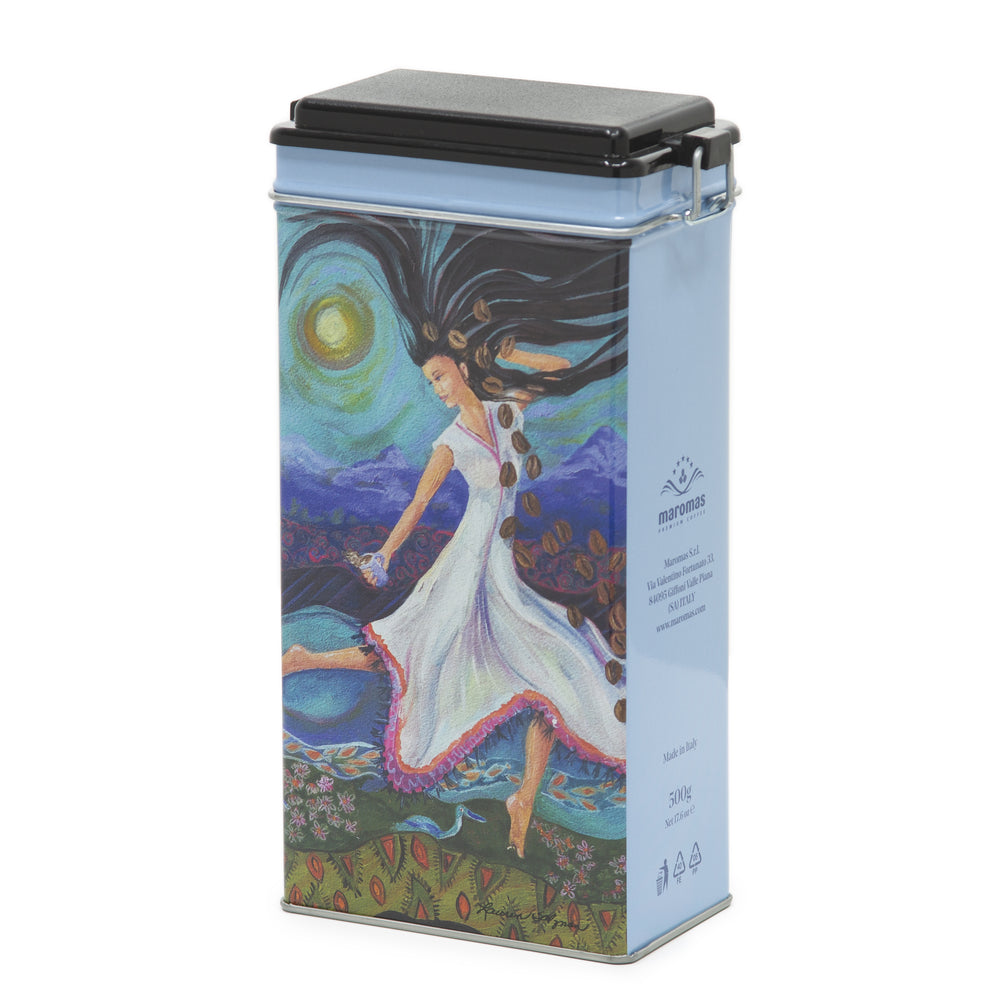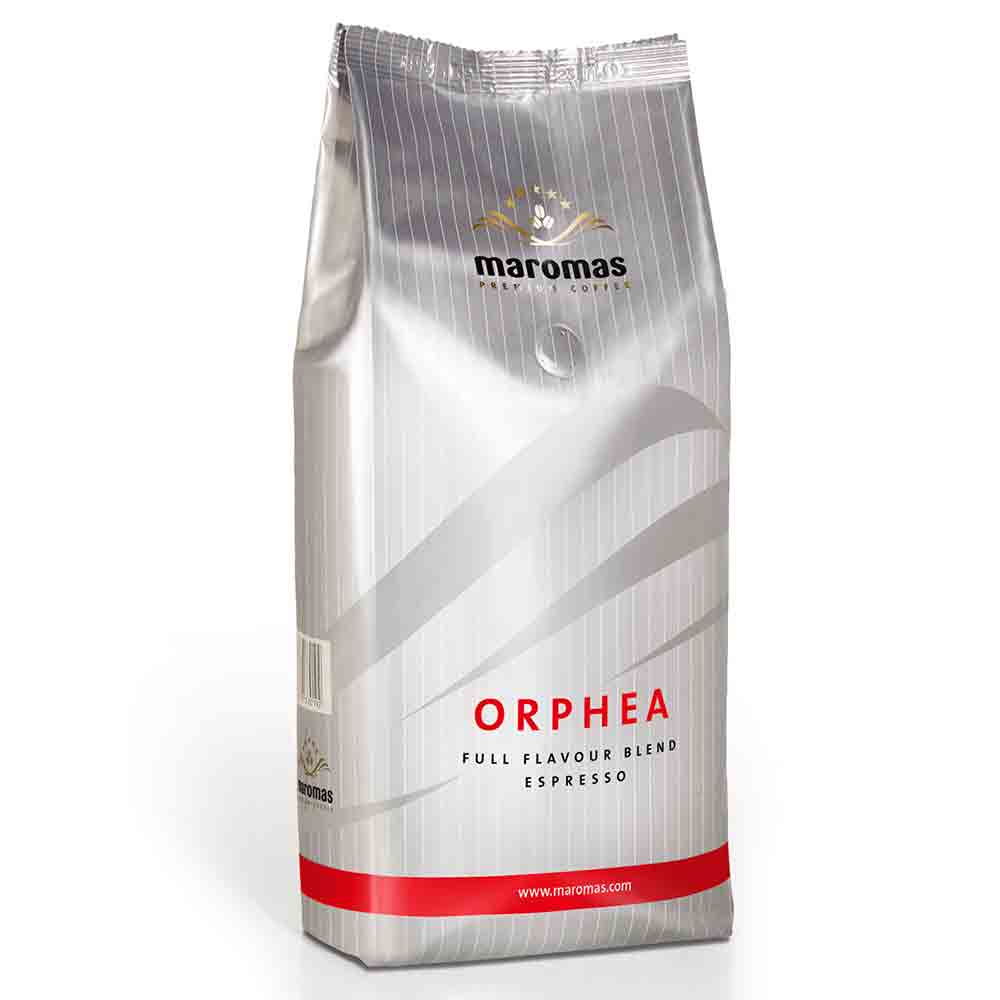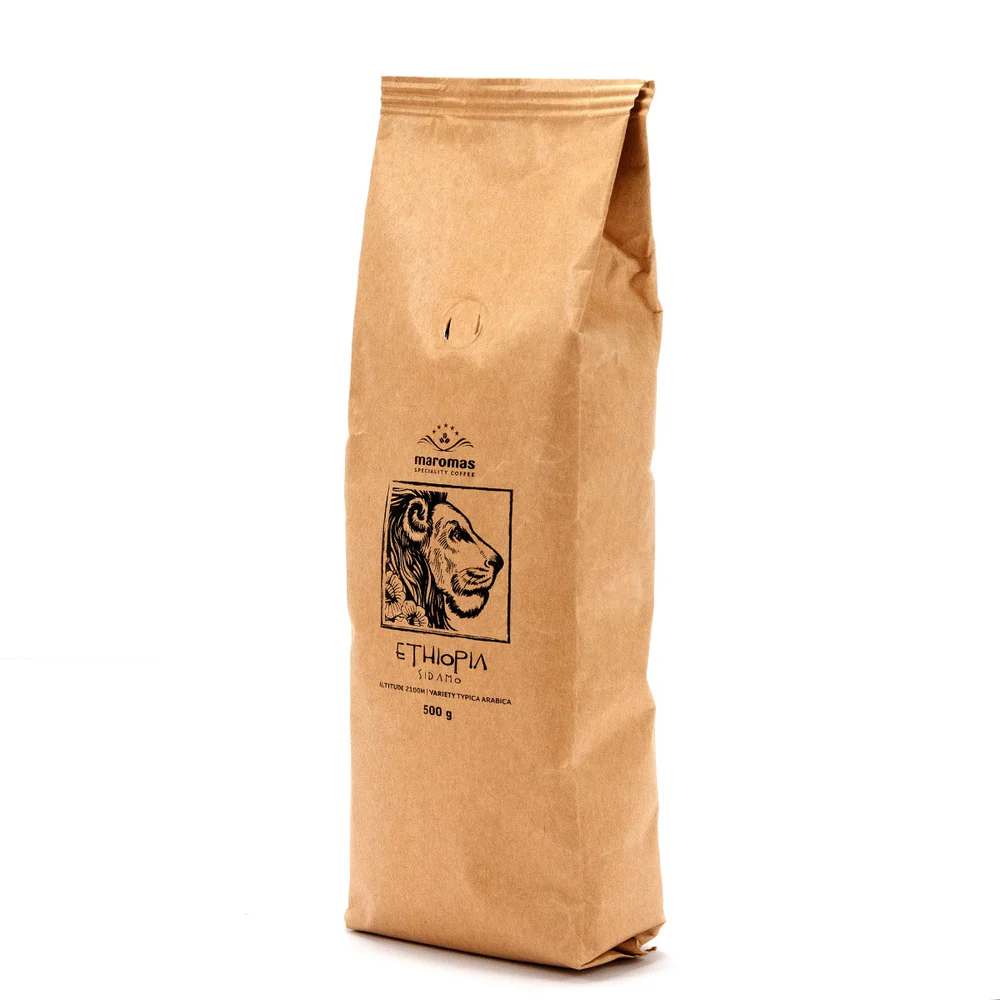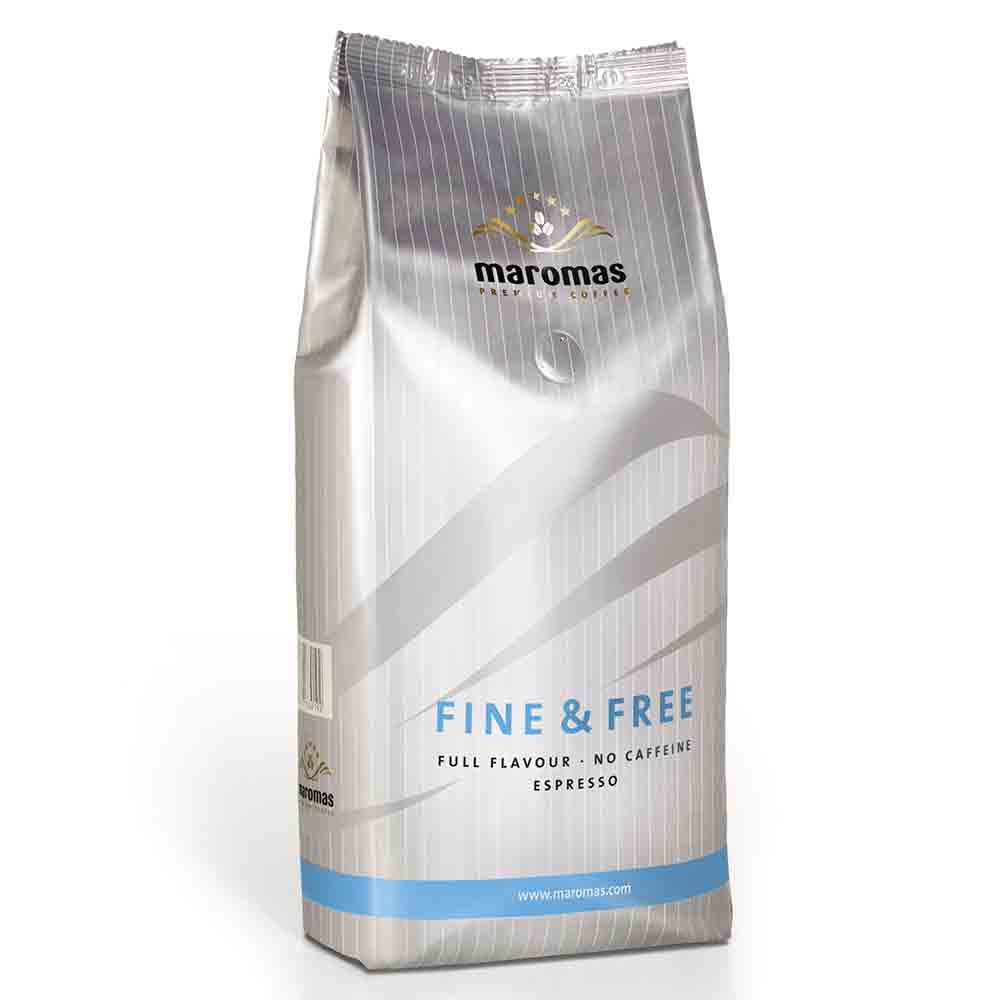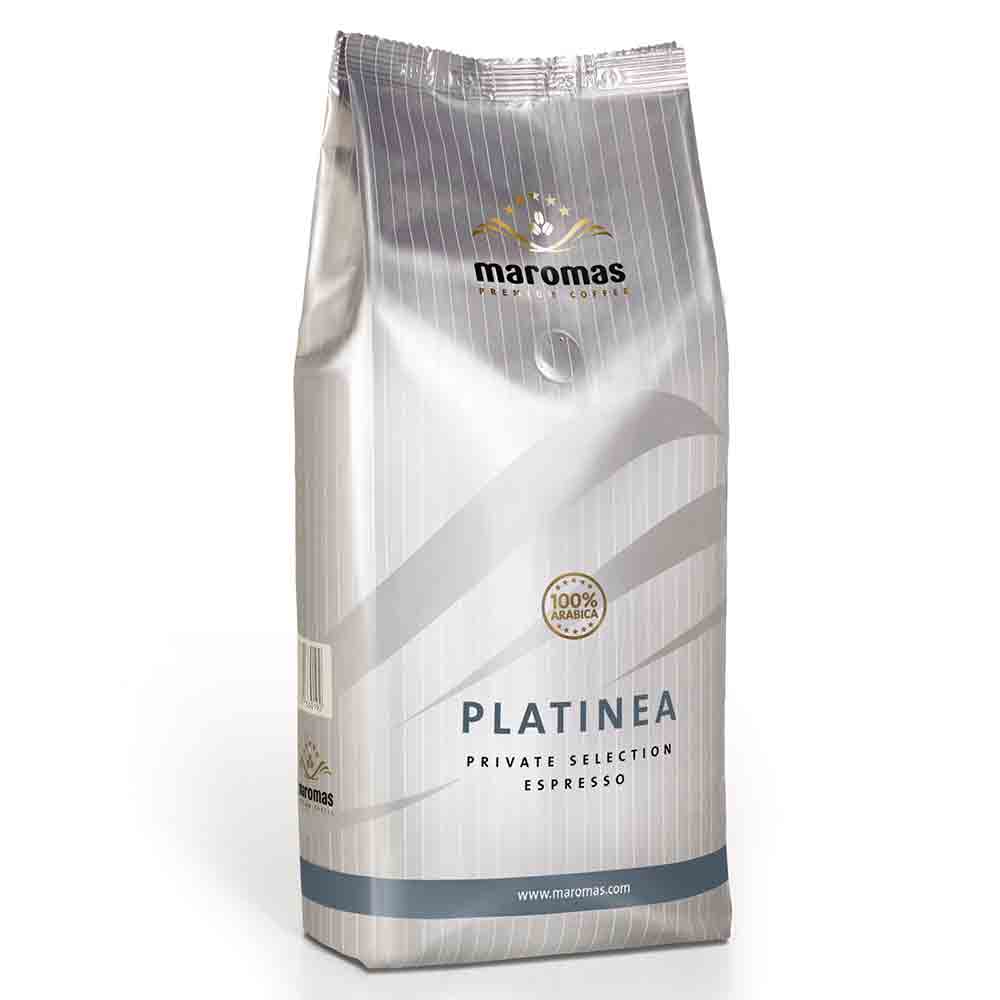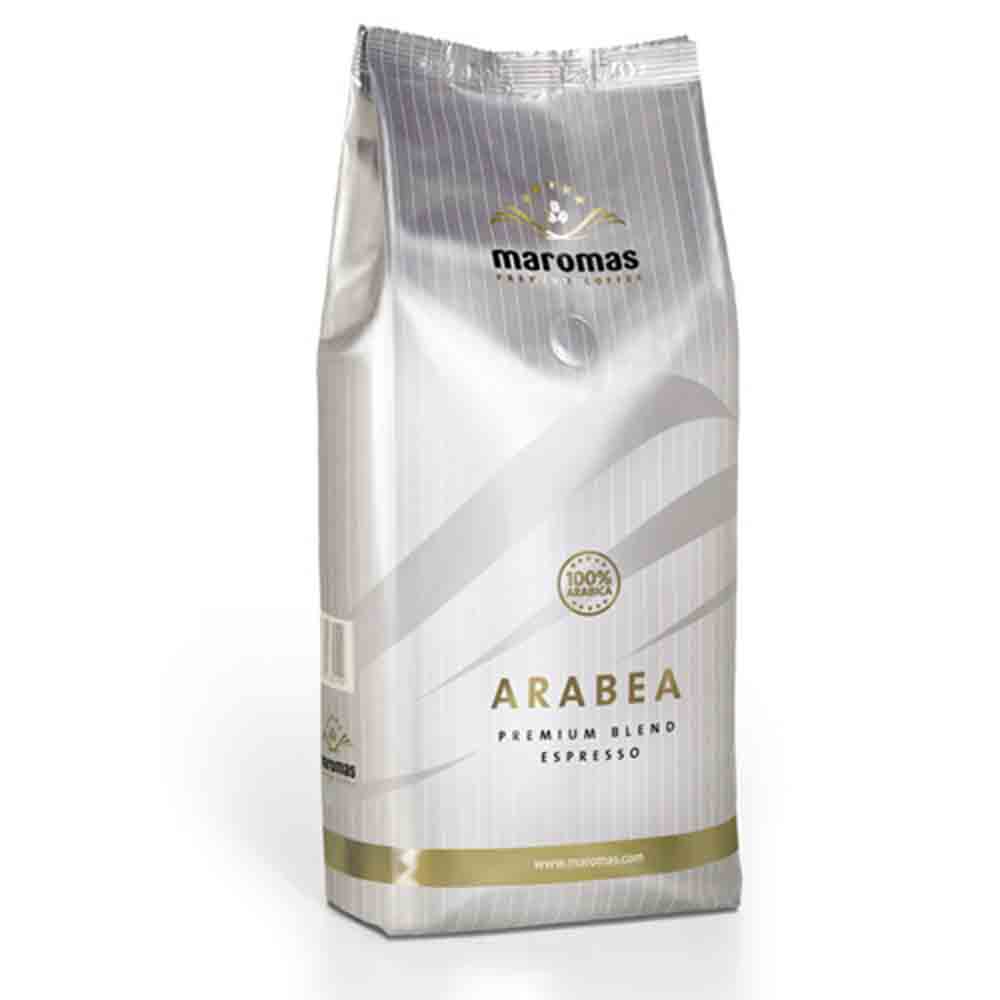Making Great Coffee Accessible With Maromas

I sat down with Tobias Bihler, managing partner at Maromas International. Tobias runs Maromas with his uncle, Markus (chairman of the board). Markus founded Maromas and, according to Tobias, he’s the “strategic mastermind behind the brand.”
Despite this, Tobias seems like a pretty busy guy himself, so I was grateful he made the time to chat with me about the company and what makes Maromas coffee special.
Read on for what I learned from my conversation with Tobias: the story of Maromas, how they approach roasting their coffee, and how they’re working to improve home espresso for everyone.
The Maromas Story

The story of Maromas begins with the founder and chairman of the company, Markus Bihler. As Managing Partner of one of the largest espresso machine manufacturers in the world, he´s a coffee industry executive with remarkable success and experience.
But his expertise does not begin and end with espresso machines—coffee itself has always been a passion of Markus’. That, along with the thrill of challenge associated with developing another great brand and premium products, was the driving factor behind the development of Maromas Premium coffee together with his nephew Tobias.
His extraordinary coffee competence was then combined into a business consortium with the Bianco family—third-generation family of coffee roasters operating out of Salerno, Italy.
By combining the Bihlers’ prowess in brewing with the Bianco’s’ knowledge of the roasting process, Maromas was born.
After 15 years, Maromas now sells coffee in 16 countries and develops private label coffee brands for high-end hotels and restaurants, as well as national coffee importers.
A Different Coffee Attitude

What makes Maromas different from other coffee roasters?
It begins with their attitude towards drinking coffee.
Tobias explained their approach: “we try to understand what the coffee drinker wants. We don’t want to teach them what they have to want.” He goes on: “If we do coffee presentations or tastings with clients, I [always] ask if someone wants to add sugar. And I tell them please do it.”
At the end of the day, Tobias tells me, “the worm has to taste good to the fish, not the fisherman.”
>Which, of course, seems pretty obvious when you put it like that.
Tobias recalls a coffee program he was on that further illustrates Maromas’ perspective. A specialty coffee roaster joined him on the program and prepared “a really interesting Yirgacheffe” (a growing region in Ethiopia known for producing coffees with floral and fruity notes).
The roast master asked Tobias what his impression was and he said “it’s perfectly prepared, but not my idea of a daily coffee.”
“Yeah, you have to get used to it,” she said.
“I can, yes,” Tobias thought. “But I don’t have to.”
Meaning, unless he’s intrinsically motivated to develop his coffee palette, why wouldn’t he just drink a coffee he already liked? At the end of the day, what constitutes the “best espresso beans” or the “perfect espresso shot” is going to change from person to person depending on what flavor profiles they enjoy.
This is Maromas’ ultimate goal: to create excellent coffee thateveryonecan enjoy drinking.
Making Good Coffee Accessible

Making excellent coffee accessible to all is all well and good, but how?
According to Tobias, you start with “aroma and flavor notes which are easy to understand.”
A Quick Lesson in Coffee Tasting
At a basic level, the coffee taste spectrum runs from acidic on one end to bitter on the other.
Light roasts tend to skew acidic, with more esoteric, nuanced, specific-crowd-pleasing flavors.
Dark roasts, on the other hand, tend to skew bitter, which is specific-crowd-pleasing in an entirely different way.
Tobias tells me that the secret to crafting a delicious roast is to ensure these basic flavors are balanced. In this way, more complex aromas can develop.
Defining Coffee Flavors
At first glance, “acidic” and “bitter” may seem like negative adjectives, but helping customers contextualize those flavors goes a long way.
Acidity can be characteristic of fruit juices and sweetness as well, while bitterness is a characteristic of dark chocolate.
Maromas’ goal is to provide customers with information that helps them understand how their coffee will taste without overwhelming them with information in the form of super-complex tasting notes.
Coffee Anyone Can Brew

But simply helping customers understand if they’d like your coffee is not the end of the line. In order to truly make good coffee more accessible, Maromas strives to produce roasts that are easy to “handle.”
What does this mean?
Even inexperienced home baristas should be able to use the beans to make delicious coffee at home.
Whereas lightly roasted, single-origin coffees require much more precision in order to coax out the nuanced flavors their beans contain, a Maromas blend will taste good basically no matter what.
Creating such a blend seems easier said than done. According to Tobias, the secret is to “hit the sweet spot of the right roast and composition of the blend.”
Quality & Qualities of Coffee Beans

Because coffee grows naturally (i.e. it’s beholden to the influence of weather patterns), it’s impossible for a single farm to guarantee any sort of consistency of flavors within their coffee from harvest to harvest.
A dry year; a wet one; a year in which the soil did not recuperate as many nutrients as it normally does for whatever reason…for any of these reasons and many others, each coffee harvest will be at least subtly different from the last.
When producing a single origin coffee, Tobias tells me, “you have to accept for yourself that in the new harvest the coffee can taste different. This is fine. This can be nice.”
On the whole, however, Maromas wants their customers to be able to make a consistently good cup of coffee every single morning. “It’s like drinking beer,” Tobias explains. “Of course you try around a little bit. But there's one beer you like for sure.” Maromas aspires to be the one espresso blend you like for sure.
This means you need to start with quality coffee beans. Roasting darker can cover up many of the flavor imperfections in coffee, but if you want the vast majority of people to enjoy your blend, this simply isn’t an option, which is why Maromas splits the difference between super-light and super-dark roasts.
They start by ensuring they use only the highest-quality beans, which they procure from qualified growers and traders who can guarantee both quality and consistency because they source their beans from all over the world.
Then, Maromas roasts to ensure a consistent flavor profile without erasing any sort of inherent flavors from the beans—and avoiding overly-bitter taste profiles.
Following up with Maromas in 2025, Tobias filled us in on some exciting developments on the roasting front "Two years ago, we completely renovated our roastery and brought everything up to the latest technological standards. Our coffee is carefully roasted to perfection using the most efficient equipment from IMF. Additionally, our entire production facility is equipped with a photovoltaic system, which covers more than 80% of the electricity required."
Maintaining Excellence

Composing blends of coffees that result in highly accessible coffee, however, is a rather involved process.
It’s not enough to simply buy the same coffee every year (see everything above re: inconsistent flavors and constantly-changing weather patterns).
So, if you can’t count on any sort of consistency from harvest to harvest, how could you possibly maintain a recognizable flavor profile from year to year?
Just like an artist may combine different shades and colors to create the specific purple they’re looking for, so can a roaster combine beans of differing tasting profiles to achieve a specific flavor result.
Which is why the Bihlers and the Biancos spend quite a lot of time cupping coffees from various origins—in order to ensure that Maromas Orphea always tastes like Maromas Orphea.
The Complexity of Consistency
My conversation with Tobias about Maromas’ philosophy and the work they do to ensure consistency and accessibility in their coffees reminded me of something I heard recently on an old episode of the competitive cooking showTop Chef.
In praising a contestant’s reimagined family recipe, head judge Tom Colicchio noted there were “layers and layers of steps [the chef] had to take to accomplish this [dish], but it doesn’t appear that way.”
I see a similar message in the way Maromas operates—the drive to put an incredible amount of effort into a product in order to ensure it appears simple, even though it’s not.
Where does this drive come from?
“In the end we are doing that because we love it,” Tobias says.“ Profit is not the highest idea for us—it's the idea of bringing people into a higher quality of coffee—because there's a lot of bad coffee out there.”
Shop This Blog
-
Lauren Salzman Art - Coffee Dance Tin Overview Produced for us in collaboration Maromas, these beautiful and functional tins feature classic artwork by Whole Latte Lov...
-
It is usually ORPHEA that seduces people to start drinking their espresso without sugar. The only thing you will really miss is the long lasting phase that the sugar n...
-
Maromas Single Origin Guatemala is a city roast of 100% arabica, harvested at the Finca Santa Rita farm in Guatemala at an elevation of 1,400 m. This coffee is best fo...
-
Maromas Single Origin Ethiopia is a city roast of 100% arabica harvested from the birthplace of coffee itself, Ethiopia, at an elevation of 2,100 m. These beans result...
-
The Fine & Free blend is composed of 100% Arabica beans, which have undergone decaffeination. Maromas is using a most safe and gentle procedure. Before roasting th...
-
This very elegant Arabica-Robusta blend is well known for the rich colour and multitude of cream it produces. It portrays its strong character without being bitter and...
-
A fine Cuvée Prestige espresso with grand aromas and noble acidity for the distinguished Espressionist. A blend composed of 100% Arabica coffees. Each cultivar is roas...
-
Perfect for enjoying any Maromas blend, these beautiful espresso cups were produced by Club House for Maromas. Each cup comes paired with a matching off center saucer, decorated with the Maromas logo.
2.5oz Capacity
-
Experience the gourmet quality of Maromas espresso with our whole bean sampler. This three bag package includes 2.2lbs each of Maromas' Arabea, Orphea and Marmea whole...
-
This Barista Darling is comprised of 100% carefully wet-dry processed Arabica beans from Latin American origins. It is extremely well balanced and delivers rich and ar...
Related Articles

The History of Maromas Coffee

 USA
USA

